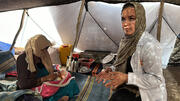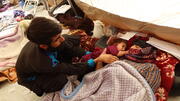-
Country Pages
-
Asie et Pacifique
- Afghanistan
- Bangladesh
- Bhoutan
- Cambodge
- Chine
- Inde
- Indonésie
- République islamique d'Iran
- République démocratique populaire lao
- Malaisie
- Maldives
- Mongolie
- Myanmar
- Népal
- Pakistan
- Papouasie-Nouvelle-Guinée
- Philippines
- Sri Lanka
- Thaïlande
- Timor oriental
- Viet Nam
-
Europe de l'Est et Asie centrale
- Albanie
- Arménie
- Azerbaïdjan
- Bélarus
- Bosnie-Herzégovine
- Géorgie
- Kazakhstan
- Bureau du Kosovo
- Kirghizistan
- Moldavie, République de
- Macédoine du Nord
- Serbie
- Tadjikistan
- Türkiye
- Turkménistan
- Ukraine
- Ouzbékistan
-
États arabes
- Algérie
- Djibouti
- Égypte
- Iraq
- Jordanie
- Liban
- la Libye
- Maroc
- Oman
- Palestine
- Somalie
- Soudan
- République arabe syrienne
- Tunisie
- Yémen
-
Afrique orientale et australe
- Angola
- Botswana
- Burundi
- Comores
- République démocratique du Congo
- Érythrée
- Eswatini
- Éthiopie
- Kenya
- Lesotho
- Madagascar
- Malawi
- Maurice
- Mozambique
- Namibie
- Rwanda
- Seychelles
- Afrique de Sud
- Soudan du Sud
- Tanzanie, République unie de
- Ouganda
- Zambie
- Zimbabwe.
-
Amérique latine et Caraïbes
- Argentine
- Bolivie, État plurinational de
- Brésil
- Chili
- Colombie
- Costa Rica
- Cuba
- République dominicaine
- Équateur
- Salvador (Le)
- Guatemala
- Haïti
- Honduras
- Mexique
- Nicaragua
- Panama
- Paraguay
- Pérou
- Uruguay
- Venezuela, la République bolivarienne du
- Caraïbes (multipays)
-
Afrique de l'Ouest et du Centre
- Bénin
- Burkina Faso
- Cabo Verde
- Cameroun
- République Centrafricaine
- Tchad
- Congo
- Côte d'Ivoire
- Guinée équatoriale
- Gabon
- Gambie
- Ghana
- Guinée
- Guinée-Bissau
- Libéria
- Mali
- Mauritanie
- Niger
- Nigéria
- Sao Tomé-etPrincipe
- Sénégal
- Sierra Leone
- Togo
-
- Accueil
- Les données
- Afghanistan

UNFPA Afghanistan
Home to one of the world’s youngest, fastest growing populations, Afghanistan faces challenges exacerbated by conflict, weak governance and cultural barriers, especially in the case of impoverished women and children. UNFPA programmes invest in reproductive health and rights, gender equality, and socioeconomic development; humanitarian assistance and youth issues are priorities in all three areas. Assistance is channelled to replicable programmes in provinces with high rates of poverty and maternal and infant mortality, and where communities are actively engaged in their development.
Population
- Population âgée de 0 à 14 ans (en %)
- Population âgée de 15 à 64 ans (en %)
- Population aged 65+
Santé sexuelle et reproductive
- Part des naissances encadrées par un personnel de santé qualifié
Planification familiale
- Modern method
Éducation
Gender, Rights, and Human Capital
Pratiques nuisibles
Population Pyramid
Espérance de vie
Total fertility rate
nouvelles
« L’espoir est arrivé en la personne de Rahna » : les sages-femmes sauvent des vies après le séisme en Afghanistan
ZINDA JAN, Afghanistan – C’est aux premières heures du 15 octobre que Hanifa, 20 ans, a ressenti les contractions…
« Elles ont besoin qu’on les écoute » : l’UNFPA propose des services de soutien psychosocial après les séismes en Afghanistan
HERAT, Afghanistan – « Je croyais que quelqu’un était en train de me secouer. Puis le toit s’est effondré. » Voilà ce…


Réseaux sociaux
Tweets from UNFPATürkiye